Synergistic contribution of the Legionella pneumophila lqs genes to pathogen-host interactions
- PMID: 18805977
- PMCID: PMC2576672
- DOI: 10.1128/JB.01002-08
Synergistic contribution of the Legionella pneumophila lqs genes to pathogen-host interactions
Abstract
The causative agent of Legionnaires' disease, Legionella pneumophila, is a natural parasite of environmental protozoa and employs a biphasic life style to switch between a replicative and a transmissive (virulent) phase. L. pneumophila harbors the lqs (Legionella quorum sensing) cluster, which includes genes encoding the autoinducer synthase LqsA, the sensor kinase LqsS, the response regulator LqsR, and a homologue of HdeD, which is involved in acid resistance in Escherichia coli. LqsR promotes host-cell interactions as an element of the stationary-phase virulence regulatory network. Here, we characterize L. pneumophila mutant strains lacking all four genes of the lqs cluster or only the hdeD gene. While an hdeD mutant strain did not have overt physiological or virulence phenotypes, an lqs mutant showed an aberrant morphology in stationary growth phase and was defective for intracellular growth, efficient phagocytosis, and cytotoxicity against host cells. Cytotoxicity was restored upon reintroduction of the lqs genes into the chromosome of an lqs mutant strain. The deletion of the lqs cluster caused more-severe phenotypes than deletion of only lqsR, suggesting a synergistic effect of the other lqs genes. A transcriptome analysis indicated that in the stationary phase more than 380 genes were differentially regulated in the lqs mutant and wild-type L. pneumophila. Genes involved in protein production, metabolism, and bioenergetics were upregulated in the lqs mutant, whereas genes encoding virulence factors, such as effectors secreted by the Icm/Dot type IV secretion system, were downregulated. A proteome analysis revealed that a set of Icm/Dot substrates is not produced in the absence of the lqs gene cluster, which confirms the findings from DNA microarray assays and mirrors the virulence phenotype of the lqs mutant strain.
Figures

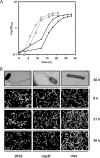

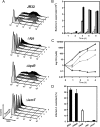
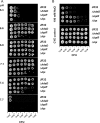

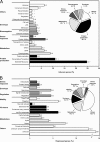
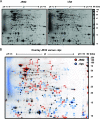
Similar articles
-
The autoinducer synthase LqsA and putative sensor kinase LqsS regulate phagocyte interactions, extracellular filaments and a genomic island of Legionella pneumophila.Environ Microbiol. 2010 May;12(5):1243-59. doi: 10.1111/j.1462-2920.2010.02167.x. Epub 2010 Feb 9. Environ Microbiol. 2010. PMID: 20148929
-
The Legionella pneumophila response regulator LqsR promotes host cell interactions as an element of the virulence regulatory network controlled by RpoS and LetA.Cell Microbiol. 2007 Dec;9(12):2903-20. doi: 10.1111/j.1462-5822.2007.01005.x. Epub 2007 Jul 5. Cell Microbiol. 2007. PMID: 17614967
-
The Legionella pneumophila orphan sensor kinase LqsT regulates competence and pathogen-host interactions as a component of the LAI-1 circuit.Environ Microbiol. 2013 Feb;15(2):646-62. doi: 10.1111/j.1462-2920.2012.02889.x. Epub 2012 Oct 4. Environ Microbiol. 2013. PMID: 23033905
-
Legionella quorum sensing and its role in pathogen-host interactions.Curr Opin Microbiol. 2018 Feb;41:29-35. doi: 10.1016/j.mib.2017.11.010. Epub 2017 Nov 27. Curr Opin Microbiol. 2018. PMID: 29190490 Review.
-
Intra-Species and Inter-Kingdom Signaling of Legionella pneumophila.Front Microbiol. 2017 Feb 3;8:79. doi: 10.3389/fmicb.2017.00079. eCollection 2017. Front Microbiol. 2017. PMID: 28217110 Free PMC article. Review.
Cited by
-
Quorum sensing controls persistence, resuscitation, and virulence of Legionella subpopulations in biofilms.ISME J. 2021 Jan;15(1):196-210. doi: 10.1038/s41396-020-00774-0. Epub 2020 Sep 19. ISME J. 2021. PMID: 32951019 Free PMC article.
-
The professional phagocyte Dictyostelium discoideum as a model host for bacterial pathogens.Curr Drug Targets. 2011 Jun;12(7):942-54. doi: 10.2174/138945011795677782. Curr Drug Targets. 2011. PMID: 21366522 Free PMC article. Review.
-
Iron Limitation Triggers Early Egress by the Intracellular Bacterial Pathogen Legionella pneumophila.Infect Immun. 2016 Jul 21;84(8):2185-2197. doi: 10.1128/IAI.01306-15. Print 2016 Aug. Infect Immun. 2016. PMID: 27185787 Free PMC article.
-
Migration of Acanthamoeba through Legionella biofilms is regulated by the bacterial Lqs-LvbR network, effector proteins and the flagellum.Environ Microbiol. 2022 Aug;24(8):3672-3692. doi: 10.1111/1462-2920.16008. Epub 2022 May 25. Environ Microbiol. 2022. PMID: 35415862 Free PMC article.
-
Acanthamoeba and Dictyostelium as Cellular Models for Legionella Infection.Front Cell Infect Microbiol. 2018 Mar 2;8:61. doi: 10.3389/fcimb.2018.00061. eCollection 2018. Front Cell Infect Microbiol. 2018. PMID: 29552544 Free PMC article. Review.
References
-
- Albers, U., K. Reus, H. A. Shuman, and H. Hilbi. 2005. The amoebae plate test implicates a paralogue of lpxB in the interaction of Legionella pneumophila with Acanthamoeba castellanii. Microbiology 151167-182. - PubMed
-
- Albers, U., A. Tiaden, T. Spirig, D. Al Alam, S. M. Goyert, S. C. Gangloff, and H. Hilbi. 2007. Expression of Legionella pneumophila paralogous lipid A biosynthesis genes under different growth conditions. Microbiology 1533817-3829. - PubMed
Publication types
MeSH terms
Substances
Grants and funding
LinkOut - more resources
Full Text Sources

